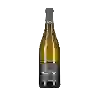
Winery Mas des RestanquesVaucluse Rosé
This wine generally goes well with beef and spicy food.
Food and wine pairings with Vaucluse Rosé
Pairings that work perfectly with Vaucluse Rosé
Original food and wine pairings with Vaucluse Rosé
The Vaucluse Rosé of Winery Mas des Restanques matches generally quite well with dishes of beef or spicy food such as recipes of beef kidney or pork colombo.
Details and technical informations about Winery Mas des Restanques's Vaucluse Rosé.
Discover the grape variety: Semidano
Cultivated for a very long time in Sardinia (Italy) where it occupied an important place before the phylloxera crisis... it is almost unknown in France.
Informations about the Winery Mas des Restanques
The Winery Mas des Restanques is one of wineries to follow in Vaucluse.. It offers 7 wines for sale in the of Vaucluse to come and discover on site or to buy online.
The wine region of Vaucluse
The wine region of Vaucluse is located in the region of Méditerranée of Vin de Pays of France. Wineries and vineyards like the Domaine Chêne Bleu or the Domaine Chêne Bleu produce mainly wines red, white and pink. The most planted grape varieties in the region of Vaucluse are Viognier, Merlot and Cabernet-Sauvignon, they are then used in wines in blends or as a single variety. On the nose of Vaucluse often reveals types of flavors of earthy, blueberry or dried herbs and sometimes also flavors of savory, anise or cinnamon.
The wine region of Méditerranée
Méditérranée is a PGI title that covers wines produced in a large area of the South-eastern coast of France, roughly corresponding to the wine region of Provence but also including Part of the Rhône Valley. The PGI shares its territory with multiple AOC appellations as varied as Châteauneuf-du-Pape, Bandol and Côtes de Provence. The PGI Méditérranée catchment area extends over 10 departments (including the two on the island of Corsica), as well as smaller parts of the Isère, Loire and Rhône departments. Viticulture is essential to the culture and economy of this part of France.
The word of the wine: Cooked wine
In Provence, wine made from must cooked and reduced over a wood fire, traditionally consumed at Christmas time with the thirteen desserts.














